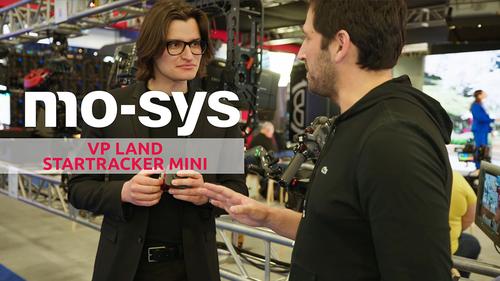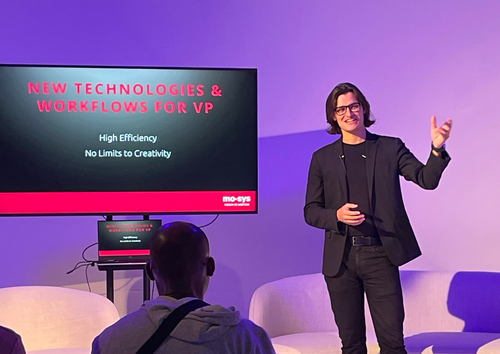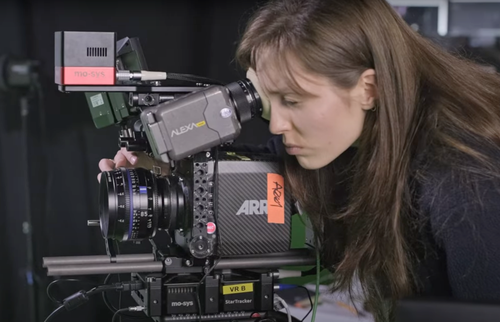What is the difference between AR and VR Broadcasting?
Augmented reality (AR) and virtual reality (VR) are two of the most exciting and up-and-coming technologies associated with broadcasting. They enhance our experience of the digital world by altering our perception of the world presented to us. However, the terms AR and VR are often mistaken for each other with many unclear on the distinction between the two. In this article, we will simplify it for you and explain exactly what is the difference between AR and VR broadcasting.
What is AR broadcasting?
AR is when a layer of computer-generated images are overlaid onto objects or people that are present in the real world, rather than entirely replacing the background like VR. In the world of broadcast, AR adds value to our viewing experience and helps us digest information in a more visual and increasingly more interactive way.
One of the major technical benefits of using AR is that it is simpler than VR. It does not require a green screen, nor specific lighting or keying; graphics are simply projected onto the real-world footage whether you are shooting indoors or outdoors. Augmented reality can be challenging to get right, however. AR objects can often clip through the floor or other objects and can also float around the space – this is especially bad when AR interacts with the real world.
Recently, AR is becoming far more realistic thanks to improvements in real-time tracking technologies such as StarTracker. New technological developments are helping to make AR broadcasting even more engaging for audiences, with the quality of news, elections and live entertainment coverage improving constantly.
Examples of AR broadcasting
Here at Mo-Sys, we’ve worked with the likes of the BBC, ABC, ESPN and The Weather Channel, by implementing our tracking technology to help them achieve high-quality AR broadcasting. For this year’s Oscars, E! used AR graphics to showcase the biggest talking points and highlights of the Academy Awards ceremony. Using our Mo-Sys bolt-on tracking kit CGLA studios implemented AR videos and suspended them over the pool at the Hollywood Roosevelt Hotel.
Check out the video below.
What is VR in broadcast?
Strictly speaking, the kind of virtual reality technology used in broadcasting is actually ‘virtual studio technology’. Virtual studios did come before augmented reality technology, but struggled initially due to how expensive and complex the technology can be. Virtual reality aims to replace our reality with a completely fabricated version (rather than simply adding to our reality like AR). Although virtual reality primarily relates to the use of a headset which replaces what we see, and often what we hear, the term VR can also relate to broadcasting too.
Whilst AR overlays objects or graphics onto the real-world, VR broadcasting uses a green screen to combine two images or video streams together allowing the background of the subject to be removed. The result for viewers at home is a presenter that is completely immersed in a virtual environment, empowering numerous creative opportunities and countless set changes at the flick of a switch.
However, achieving virtual reality broadcasting requires many technical components to come together for a live production, with no room for error. Fortunately, our industry-proven StarTracker system is an incredibly reliable system that provides accurate tracking data for VR.
Examples of VR in broadcast
The Weather Channel demonstrated just how powerful the use of both AR and VR can be to show the devastating effects of extreme weather. With our StarTracker technology, they were able to use AR and VR to simulate different weather events and ‘destroy’ their own studio on live TV. The result was an incredibly striking broadcast that has engaged with viewers worldwide.
As you can see at the beginning of the broadcast, The Weather Channel presenter Jim Cantore interacts with informational AR graphics and augmented objects such as cars, telephone poles and destroyed houses all the while standing in front of a large video wall. Later in the live broadcast, he is then composited directly into the aftermath of the tornado using a fully virtual environment. Of what they are labelling ‘immersive mixed-reality’, the entire broadcast which utilized StarTracker pushed the boundaries of real-time AR and VR for broadcast. The Weather Channel continues to use StarTracker for their immersive mixed reality explainers every month. You can read more about the making of The Weather Channel’s AR/VR broadcasts here.
Here at Mo-Sys, we are looking forward to more broadcasters adopting AR technology to bring their shows to life, both from an informational and entertainment perspective. Find out more about our work on the cutting edge of camera motion systems by reading our blog or getting in touch with us today.




